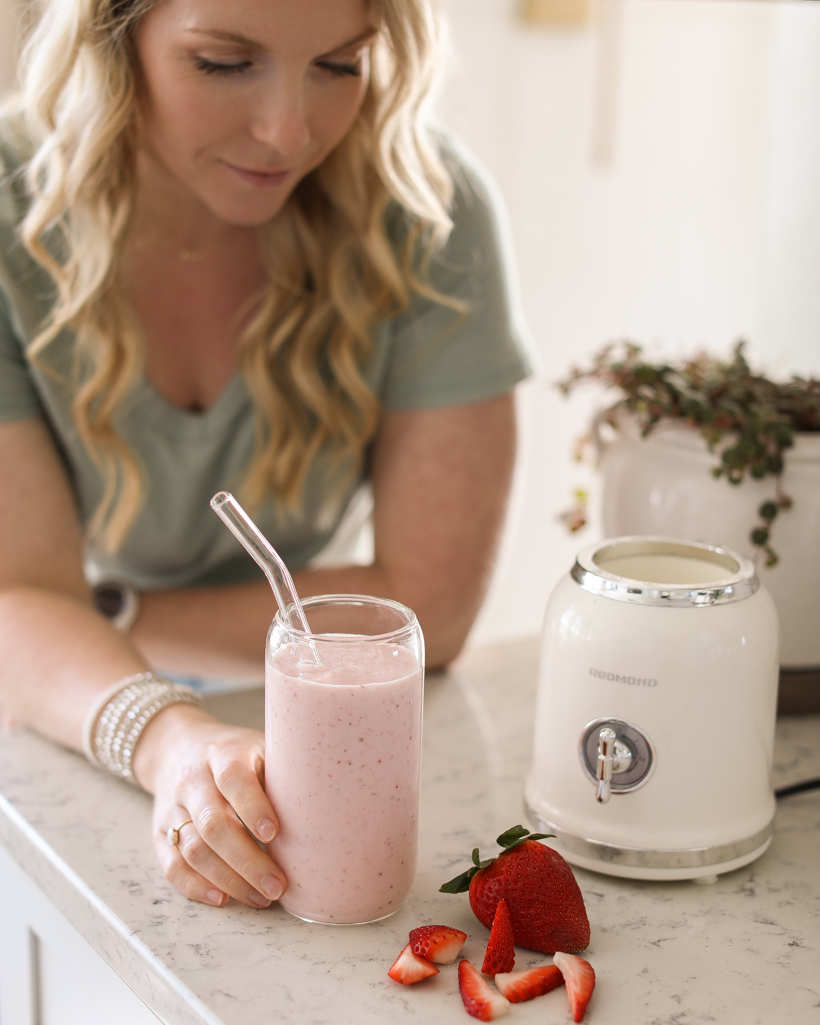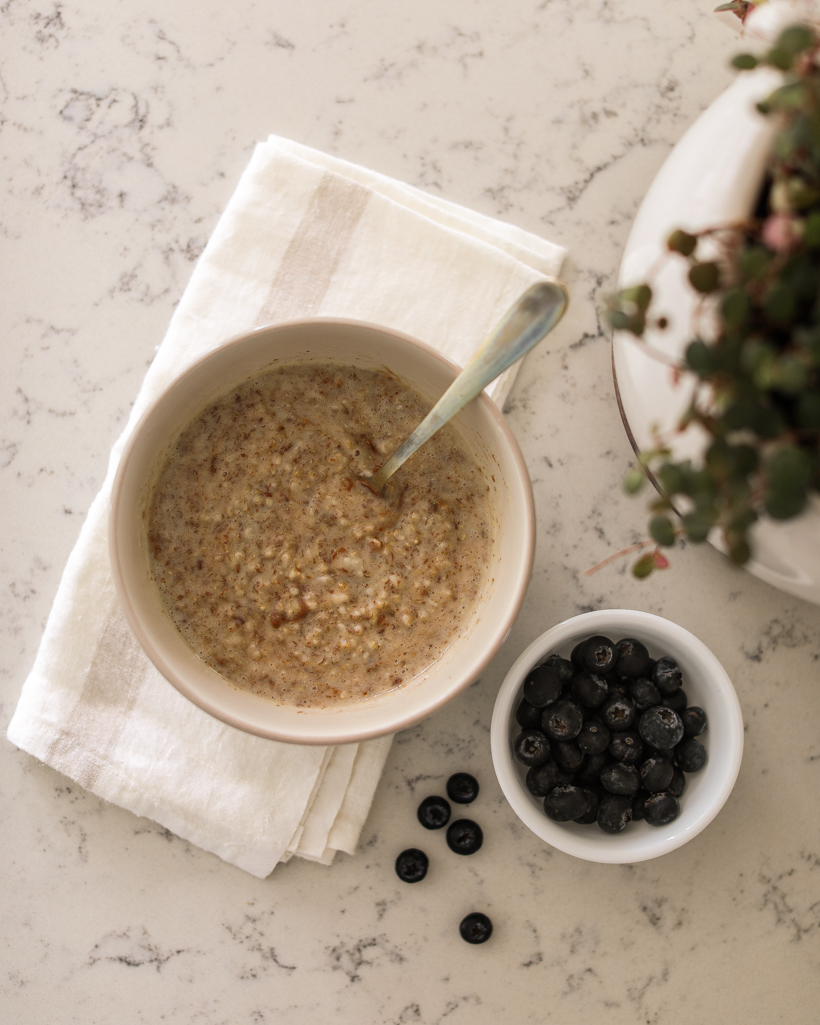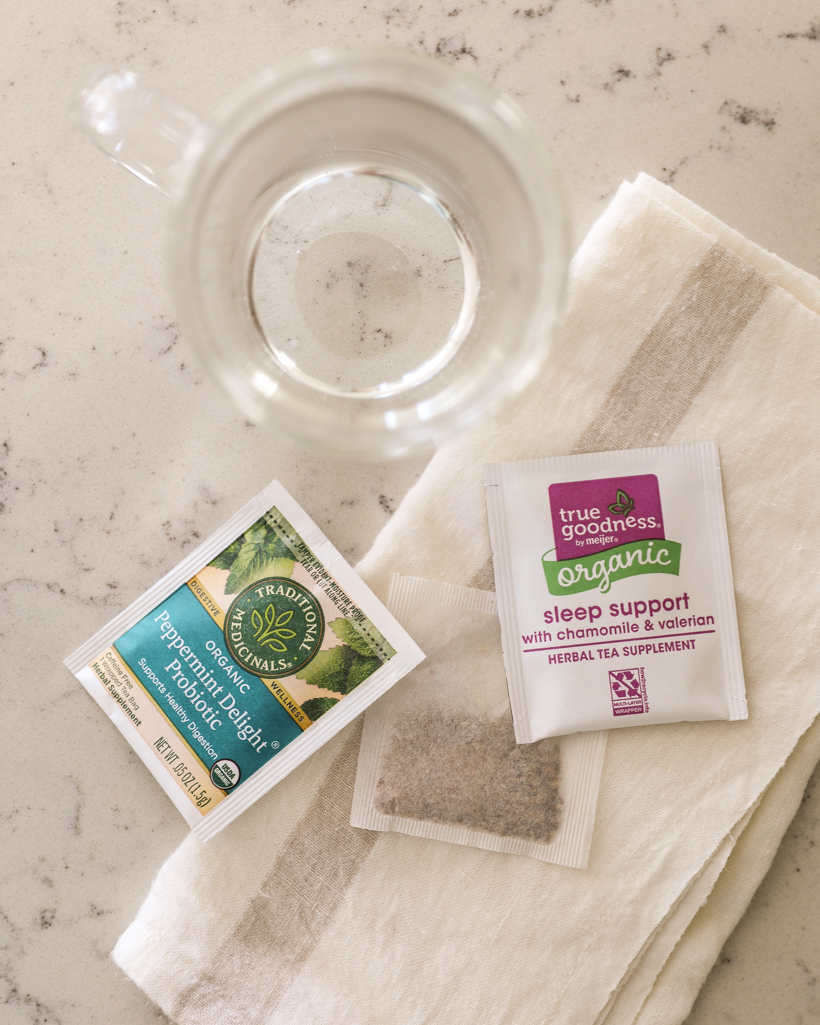
This week as I was brainstorming new recipe ideas I could make and share with you, I kept circling back to some staples I’ve added to my everyday diet that have been really beneficial, specifically for my gut health. I’ve been on quite a health journey the last few years that I mostly only share on Instagram stories, but I’ve worked really hard to manage my anxiety naturally, balance hormones, heal my gut (I had no idea how bad it really was or how many negative impacts it can have), lose weight, and build lean muscle mass.
I could write a hundred blog posts on all the changes I’ve made and routines and practices I’ve put into place – and I may in the future, if it’s something you’re interested in hearing.
But changing my diet has been a major factor in my health journey, and I thought I would share 4 things today that I incorporate into my meals daily to improve my overall health.
Eating healthy can be very overwhelming with so many options and not knowing where to start. I find it easiest to come up with 1-2 meals for breakfast, 1-2 meals for lunch, and 2-3 meals for dinner that I really like and can repeat throughout the week.
By eating the same things:
- I don’t get overwhelmed with options
- I buy less from the grocery store and save money
- I waste less food at home
- it’s harder to deviate from the plan because I already know I like the food and my brain doesn’t even have to think or make a decision (it’s like auto pilot)
- it’s easier to track macros
- I actually find that my digestion is much better because my body gets used to processing these types of foods – I do switch out fruits and vegetables weekly to help with a diverse gut microbiome… but that’s a topic for another day!
Before we get started, it goes without saying that I am not a doctor or nutritionist or qualified in any way to be telling anyone how to eat or what is best for their own health journey. I’m simply a 36 year old busy mom who has struggled with her weight and some health issues and became very interested in researching better ways to take care of and heal her body!
FLAXSEED
- Flaxseed can be consumed as a whole seed, ground powder or flaxseed oil. When flaxseed is ground or milled, it’s easier for your body to absorb its nutrients.
- Flaxseed has been shown to improve cholesterol, blood pressure, and blood sugar control. Each serving provides a good amount of protein, fiber, and omega-3 fatty acids, along with several important vitamins and minerals.
- Flaxseed is an excellent source of alpha-linolenic acid (ALA), a type of omega-3 fatty acid that’s important for heart health. ALA is one of the two essential fatty acids that you must obtain from the food you eat since your body doesn’t produce them.
- Flaxseed contains two types of fiber — soluble and insoluble — which get fermented by the bacteria in your intestines to support gut health and improve bowel regularity.
How I use it:
I make a simple oatmeal for breakfast 3-4 times a week and add a few things like flaxseed, protein powder, and fruit to boost the nutritional value. Many of the instant oatmeal packets at the grocery store are loaded with sugar and other ingredients you don’t need, so I prefer to use old-fashioned or steel cut oats.
- 40 grams old-fashioned or steel cut oats
- 1 scoop vanilla grass-fed whey protein isolate
- 10 grams ground flaxseed
OPTIONAL:- sweetener of choice – I use monk fruit or monk fruit with allulose
- nut butter – currently using cinnamon almond butter
- fruit – I like blueberries or banana
- Cook one serving of oats according to package instructions using water or milk. Remove from heat and mix in protein powder, ground flaxseed, and sweetener. Top with nut butter and fruit, if desired.
KEFIR
- Kefir is a fermented drink usually made from milk. It’s a bit like yogurt but with a more sour, tangy flavor.
- Kefir contains millions of probiotics, is low in lactose, and packed with vitamins and minerals.
- Health benefits include: improved cholesterol, blood sugar control, and gut health.
- Kefir has a much more diverse range of probiotics than yogurt.
How I use it:
I’ll make a protein shake/smoothie 3-4 times a week, usually on days I strength train at the gym as soon as I get home. I’ve used Fairlife fat-free milk in smoothies for a long time because it’s lactose free, has 50% more protein (13 grams) and 50% less sugar than regular milk. But once I started reading about the gut benefits and probiotics in kefir, I decided to start substituting half the milk for kefir.
Warning: it doesn’t smell good. In fact, it actually smells like rotten milk to me, and it’s a very thick liquid that pours out of the bottle. But because I’m only using about half a cup and adding sweet fruit and vanilla protein powder into the smoothie too, I can’t taste or smell it at all once it’s mixed together.
- 120 ml plain unsweetened kefir
- 120 ml fat free milk
- ½ scoop vanilla grass-fed whey protein isolate
- 60 grams strawberries
- 80 grams banana
- Add all ingredients to a blender, and blend on high speed until smooth. If using frozen strawberries and/or banana and the mixture becomes too thick, add a splash of hot water and blend again to thin the consistency.
HERBAL TEA
Studies show that certain teas can boost your immune system, fight off inflammation, promote cardiovascular health, and even prevent the development of certain cancers.
Here are 4 of my current favorites:
-
chamomile tea before sleep: calming, anti-inflammatory, antioxidant, anti-anxiety, immune system support, stabilizes blood sugar, eases menstrual pain, improves sleep quality
-
ginger tea: combats nausea, reduces inflammation, boosts immune system and gastrointestinal function, antioxidant, relieves joint pain
-
peppermint tea after meals: improves digestive health, nausea, bloating, antioxidant, antibacterial, relieves headache and migraine
- green tea: anti-inflammatory, may reduce cancer risk due to antioxidants and polyphenols, improves brain function, mood, and cognitive health, helps manage weight, cholesterol, and blood sugar levels
BONE BROTH
- provides collagen to support joints and bones
- supports digestion and gut health
- highly nutritious with quality protein, amino acids, and vitamins
- anti-inflammatory
- improves sleep
- supports immune function
How I use it:
You can sip bone broth on its own, which is a great way to get some extra protein and keep you full between meals. But I like to mix it with miso, which is a fermented soybean paste used often in Japanese cooking and very beneficial for gut health. I also substitute bone broth for water when cooking rice, which is an easy way to add more flavor, protein, and nutrients to a simple side dish.
OTHER HEALTHY RECIPES:
Creamy High Protein Italian Pasta
Sausage and Egg Breakfast Burritos
One Pan Roasted Sausage and Vegetables
One Pan Roasted Shrimp and Asparagus
As always, I sincerely appreciate you shopping through the links I share, which allows me to make a small commission from your purchase while your purchase price remains the same. When you use my affiliate links, I’m better able to create content for this blog as well as support my family, and I thank you from the bottom of my heart for supporting what I do!












Why are the recipes in metric? Aren’t you in usa? Hard to follow as is. Fyi
That’s a great question! I track macros, which is the amount of protein, carbs, and fat I eat in my daily diet. The most accurate way to track macros or even just simply count calories is by using a kitchen scale and measuring by weight vs. “1 cup” or “1 tbsp”. Even without tracking macros, I find that using a kitchen scale makes cooking really simple and I make a lot less dirty dishes. For example, instead of using various measuring cups and spoons, I can add an ingredient directly to a pot/pan/bowl and know that I have the exact measurement the recipe calls for. For a lot of recipes I create, I don’t use grams, but sometimes with more macro-friendly recipes it’s an easier/more specific form of measurement. I’ll try to include both when I can! I hope this helps and makes sense 🙂
I enjoyed this post SO MUCH! I started drinking bone broth about a year ago and love the Kettle & Fire brand too. I’m a big coffee drinker but I would love to try more teas, especially the ones you mentioned above with those benefits! I love to see what others have discovered on their health and wellness journey. . please continue to share yours with us 🙂
Thank you so much!! So proud of you for creating new habits on your health journey! I would love to hear more!